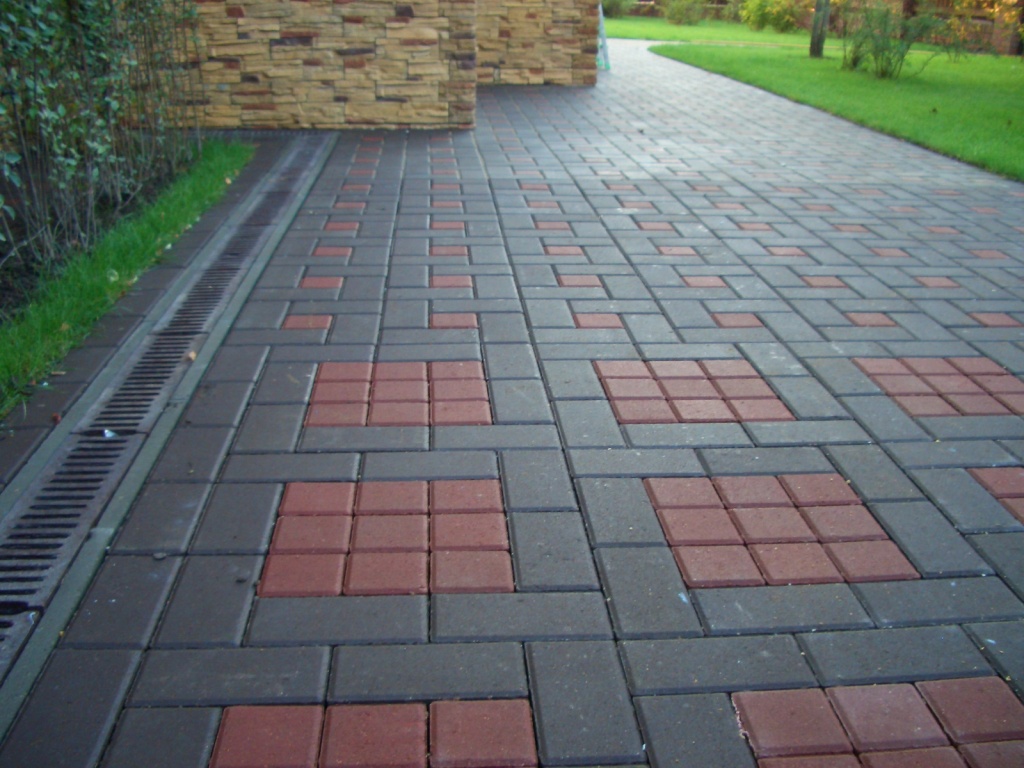
Download texture image
Download JPEGFormat: JPEG image
License: Non Commercial
Resolution: 1024x768
Size: 283 kb
Downloads: 1940
Paver - Paver texture
Pavement, in construction, is an outdoor floor or superficial surface covering. Paving materials include asphalt, concrete, stones such as flagstone, cobblestone, and setts, artificial stone, bricks, tiles, and sometimes wood. In landscape architecture, pavements are part of the hardscape and are used on sidewalks, road surfaces, patios, courtyards, etc.
Pavement comes from Latin pavimentum, meaning a floor beaten or rammed down, through Old French pavement. The meaning of a beaten-down floor was obsolete before the word entered English.
Pavement laid in patterns like mosaics were commonly used by the Romans.
A paver is a paving stone, tile, brick or brick-like piece of concrete commonly used as exterior flooring. In a factory, concrete pavers are made by pouring a mixture of concrete and some type of coloring agent into a mold of some shape and allowing to set. They are applied by pouring a standard concrete foundation, spreading sand on top, and then laying the pavers in the desired pattern. No actual adhesive or retaining method is used other than the weight of the paver itself except edging. Pavers can be used to make roads, driveways, patios, walkways and other outdoor platforms.
A stone paver is another type of paver. This type of paver is used widely in building and landscaping as it is highly prized for beauty, strength and durability. Stone pavers are made of many materials including limestone, bluestone, basalt (such as that from The Palisades used in New York City), sandstone and granite.
Travertine is a durable, low-porous stone that stays cool in direct sunlight, making it a popular choice for pool-sides, patios, walkways and outdoor entertainment areas. Travertine is salt tolerant and has a low sunlight reflection. Granite pavers have high integral strength and density making it easy to maintain and hard-wearing in outdoor use. Limestone pavers are cut from natural limestone blocks, a sedimentary rock found in mountainous areas and ocean sea beds. Limestone tends to have unique natural colour variations. Sandstone pavers are derived from natural stone and tend to be used for sidewalks, patios and backyards.
An interlocking concrete paver is a type of paver. This special type of paver, also known as a segmental paver, has emerged over the last couple of decades as a very popular alternative to brick, clay or concrete.
Segmental pavers have been used for thousands of years. The Romans built roads with them that are still there. But it was not until the mid-1940s that pavers began to be produced out of concrete. It started in the Netherlands where all the roads are made to be flexible because the country is below sea level and the ground shifts, moves and sinks. Poured concrete is not an option because it will crack. Individual units not set in concrete, and placed in sand perform far better than concrete. Before the paver was made from concrete, either real stone or a clay product was used.
The first concrete pavers were shaped just like a brick, 4” by 8” (10 cm x 20 cm) and they were called Holland Stones and still are today. These units turned out to be economical to produce and were exceedingly strong.
In addition to being economical, interlocking concrete pavers are also widely available in water-permeable designs, which have added ecological benefits. By allowing water to drain through the pavers in a way that mimics natural absorption, builders and landscapers are able to limit surface runoff and prevent soil erosion or buildup of standing water in the surrounding land area. Some permeable paver installations are designed to harvest rainwater, which can then be repurposed for uses such as irrigation or washing a car.
In this page you can download free texture images: Paver texture background images free download
More texture images of Paver
-
Paver
Shutterstock
Wooden pergola on pavers landscape design with select ornamental flowers and evergreens backyard oasis -
Paver
Shutterstock
High-end outdoor living space. A backyard patio with pergola, lounge chair, rug, tequila bar, dining set, couch, television, pool waterfall, umbrella, fire pit and stunning grey patio. Garden view. -
Paver
Shutterstock
A close-up view of concrete pavement surface, showcasing interlocking pavers arranged in a diagonal pattern -
Paver
Shutterstock
Large gray pergola on pavers with stone fireplace and waterfall urns for backyard oasis landscape design